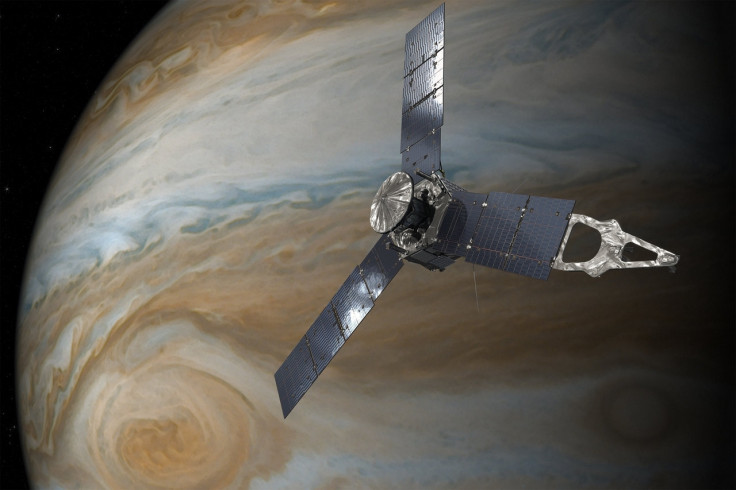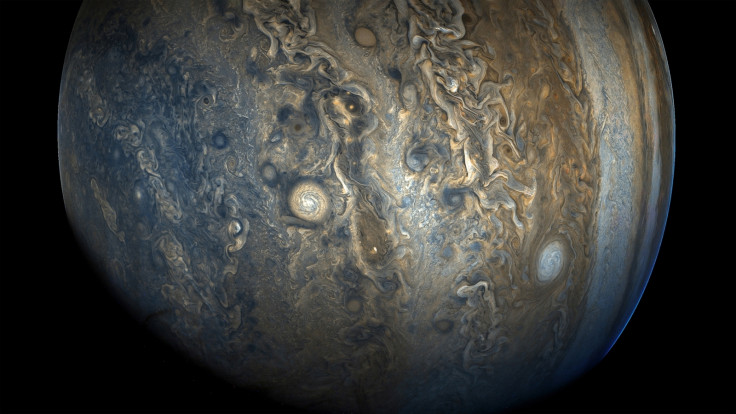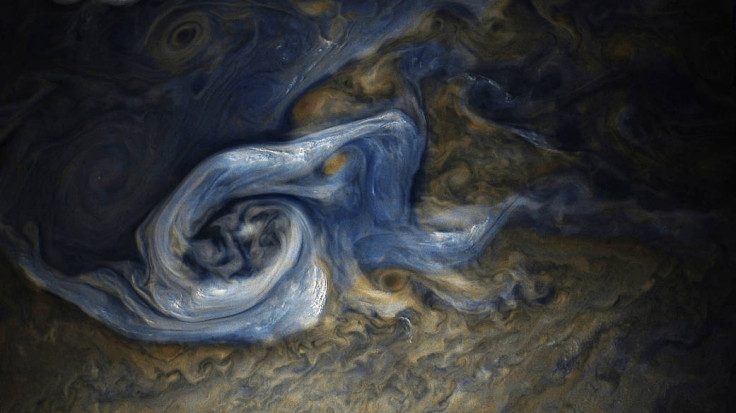Nasa releases never-before-seen images of Jupiter… and they are breathtakingly beautiful
The planet is known for its size and the Great Red Spot.

Nasa's Juno space probe has sent back a number of images of Jupiter that show the planet from angles that are not often visible from the Earth. And the photos are breathtakingly beautiful.
While the gas giant is well known for its Great Red Spot, there are a lot of other features that are not as well-known. Nasa's recently-released images show a few of those features.
The "string of pearls"
After Juno made a number of close flybys over Jupiter, scientists were able to get a closer look at the eight massive storms that seem to be constantly raging in the planet's atmosphere. Called the "string of pearls", Nasa was able to capture this feature from Jupiter's southern hemisphere.
The space agency said that since 1986, the "pearls have varied in number – from six to nine". Juno usually flies close to the cloud tops at an altitude of around 3,400 km to study the planet's atmosphere, attempting to learn more about Jupiter's origins and its make-up.

Jupiter's auroras
Jupiter's auroras are unique in the sense that they are intense and bright. They are also quite different from pole to pole, Nasa noted. A team of researchers who are creating maps of Jupiter's X-ray emissions from its X-ray hotspots made a number of discoveries. One of those discoveries is that X-rays from Jupiter's south pole were found to pulse consistently every 11 minutes. The north pole's X-rays, however, were found to act independently, having erratic increases and decreases in brightness. For scale, Nasa says that each aurora spot can cover about half the surface area of the Earth. This phenomenon is reportedly unique to Jupiter, with X-ray auroras not seen in other gas giants in our solar system.
Close-up of a Jovian tempest
This image of a massive storm was captured during Juno's ninth flyby over Jupiter. Taken late in October, Nasa revealed that the image was taken 10,108 km from Jupiter's cloud tops and that every pixel in this image covers 6.7 km. The storm was in the planet's northern hemisphere and was rotating anti-clockwise. The dark clouds in the image were apparently lower in the atmosphere when compared to the brighter clouds. With sunlight coming from the left of the image, smaller cloud banks can also be seen casting shadows measuring 7-12 km wide, explained Nasa. They are possibly updrafts of ammonia crystals mixed with water and ice.

Nasa launched Juno in August 2011 and after five years of travel at speeds reaching 210,000 kmph, it reached Jupiter's orbit by July 2016 to start its 2-year science mission. It is currently orbiting Jupiter on a highly elliptical orbit that sees the probe fly at distances between 4,200 km from the gas giant's cloud tops and out to about 8.1 million km. Juno will complete a total of 12 orbits of Jupiter with the mission officially ending July next year.
One reason for the elliptical orbit is to minimise contact with Jupiter's intense radiation which can have adverse effects on Juno's scientific and optical instruments. At the end of its mission, Juno will make a swan dive into Jupiter and burn up like an asteroid in the planet's atmosphere. A similar strategy was used by Nasa with Cassini in Saturn so as to avoid contaminating possible life on the ringed planet's moons.





















